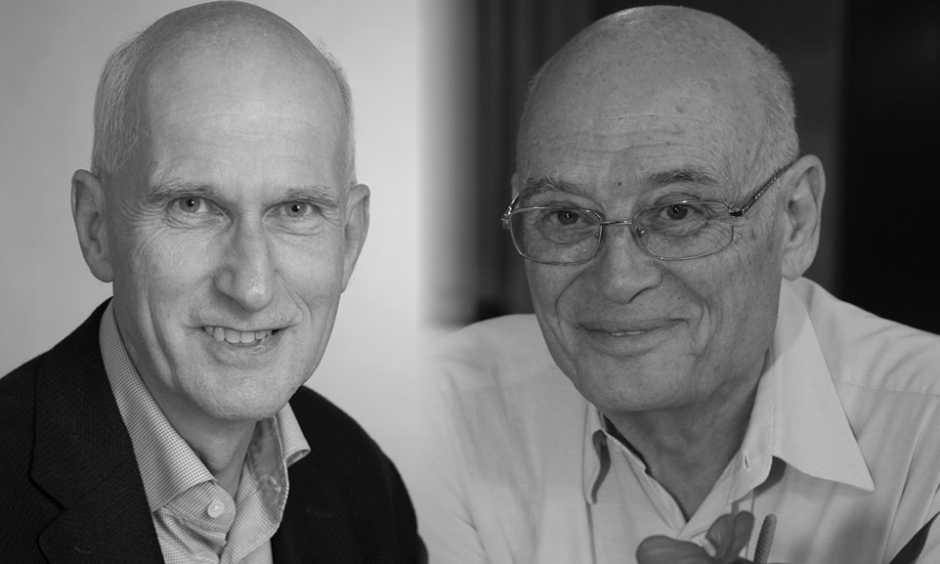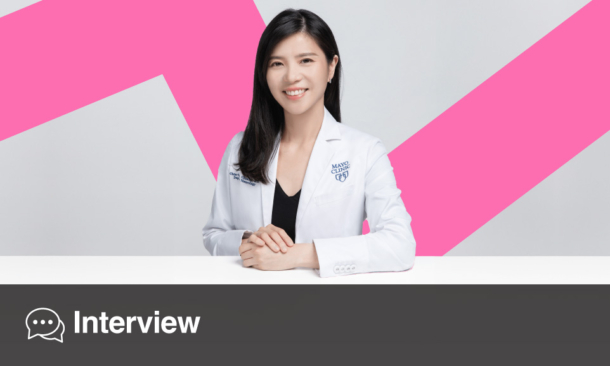Prof Nils Erik Gilhus | Professor in neurology at Department of Clinical Medicine, University of Bergen and senior consultant at Department of Neurology, Haukeland University Hospital, Bergen, Norway
Prof Emeritus Amos Korczyn | Professor of Neurology and Pharmacology Tel Aviv University Medical School, Tel Aviv, Isreal
![]()
What fascinates you the most about neurology, and why did you decide to have a career in this field?
Prof Gilhus: The brain is a really fascinating organ: it is not simple at all and there are immense opportunities in trying to understand what is going on in the brain. Another part is that you really get to see the patients as part of your investigation and be in contact with them. The last thing I would say that drove me to have a career in this field is that, as part of my training that every doctor has to complete to get a licence, I worked in a very active neurology department; once I had just finished my studies at University, I went to another active department who actively participated in research and had a great clinic, this was also in neurology.
Prof Korczyn: The brain is the most fascinating organ in the body, the most complex one too. The only way to best learn about the function of the brain is to see what happens in people whose brain is ill and the dysfunction that has occurred. This will then tell us a lot about the normal function and the mechanisms and processes that are going on. I think if one wants to solve the problem of the brain, which maybe is not completely solvable at all (maybe the brain is too complicated for the brain to understand itself), then we need to study the dysfunction. This is what neurology is about, studying the brain and helping people.
This year, EAN is expected to host >6,000 neurologists, what are the benefits of congresses like EAN?
Prof Gilhus: I speak warmly towards the international aspect that meeting people from other countries brings. I think in Europe, and in the world, some countries are in conflict with other countries, some people are in political conflict with other people, and I think congresses like this are a really important contribution for neurologists to meet, to understand each other, to have sympathy for each other, and to unite.
Prof Korczyn: I believe that the main benefits of congresses are that people meet each other. So, it is not the formal lectures themselves, but the fact that you can communicate, debate, and discuss with other neurologists that makes meetings in general important and useful to me. Congresses are more of a teaching expedition as opposed to a research institution and therefore I do not think they would advance science but rather advance our understanding of science.
Neuroinflammation is this year’s overarching theme at EAN, what developments have been made in this field since you started your career, and how will this understanding improve current and future therapies?
Prof Gilhus: I would say that there are some disorders that are defined as immunological disorders (autoimmune disorders) but in addition to these, you have all the other disorders that more or less have immunological aspects. I think this has been an important discussion point at this meeting, trying to find out to what degree Immunological mechanisms influence ‘non-immunological disorders’ such as neurodegenerative disorders, headaches, epilepsy, many more too. I think what is really interesting is the grouping of patients in diseases and the identification of specific biomarkers in subgroups of such patients. Additionally, that you can use these biomarkers to treat the patients by targeting them with monoclonal antibodies and now also with peptides. But you can find ways to interact with the biomarkers causing the disease in the whole patient group or often in subgroups of patients. Neuroinflammation in myasthenia gravis is a particular interest of mine, developments in this area have been made, for example the inhibition of complement is a new approach to treating the disorder and seems to be safe and very promising; it seems to influence a new part of the immune system.
Prof Korczyn: We have always considered inflammation as a protective process that occurs in the body. After all, during evolution inflammation developed to help the body recover from injuries. But, the study of inflammation has told us that it is very complex: sometimes it is protective but at other times it causes problems. We have also learned that quite a lot of the inflammation components, consisting of both the cellular part of it and the soluble mediators, can be lymphocytes, cytokines, or antibodies, each of which has a different function. This creates a complex picture that we need to understand.
Particularly over the past few years we learned a lot about inflammation in the brain and its involvement in different diseases. It turns out that inflammation occurs in many diseases of the brain and the question is, in which of them is the inflammation causative and in which is it trying to be curative or to suppress the disease. This is one of those difficult topics in which we try to find out what the function is. Maybe the function is not either protective or causing the damage but maybe a combination of both: maybe one arm does one thing and another arm does something else. All these things are being studied and we are learning more but we are far from a complete understanding.
Are you working on any research projects at the moment; how does your current research differ to what/how you were investigating and experimenting 20 years ago?
Prof Gilhus: One of the differences now is that in the Nordic countries we have health registries and we have good patient cohorts. Recently, I have been focusing more of my efforts into examining and using data from National health registries. Additionally, my team and I have a joint Nordic project in which we use data from the Nordic Health Registries, combine it, and better define patient cohorts to produce them with very little selection bias. Furthermore, we are now combining the Nordic health registries with biomarker data and studies. For me, this has especially revolved around myasthenia gravis and epilepsy, and we are trying to identify good and viable biomarkers that could be linked to the health registries.
Prof Korczyn: We have a large prospective study called TABASCO, in which we monitor our patients who have had a transient ischaemic attack or stroke and try to see how they maintain their cognition; this might be related to inflammatory processes. In fact, we did find inflammatory markers that are associated with cognitive decline.
Biomarkers are increasingly being seen as the future of diagnosis and treatment monitoring; what potential do you believe they truly have?
Prof Gilhus: I think that biomarkers are very important and they seem to be very important when identifying groups of patients to try and identify a pattern of biomarkers that is not specific for a single patient but defining subgroups with more specific responses to therapy. This is also a challenge because if we say that the biomarker pattern is absolutely individual then you will have no study groups to look into. You must have groups with a certain number of patients included to be able to generalise the outcomes. However, I think that biomarkers lead to a higher specificity of treatment and better definition overall. For example, myasthenia gravis and multiple sclerosis are no longer one disorder: there are many subgroups and therapy has to be directed according to biomarker studies relating to subgroups. There are many ways of obtaining biomarkers, such as imaging from neurophysiology and of course from genetics, blood samples, cell markers, and more.
Prof Korczyn: Identifying a biomarker which reflects the disease activity is important because it may tell us about the cause of the disease. A good example of biomarkers is in migraines, in which we found a substance (CGRP) that is related to the appearance of a migraine attacks. Now we have developed antibodies against this substance which suppresses the migraine activity. The biomarker in this example was helpful in identifying a potential therapeutic. In another study, we identified biomarkers that are associated with neurodegeneration. For example, neurofilament light chains, which tell us that there are some degenerative processes occurring in the brain, can be used as a biomarker to monitor disease progression and more importantly to monitor the activity of drugs: whether an intervention is helping or not. In studies, we sometimes need to include numerous patients and monitor them for many years to see the clinical changes but if we can do this using a biomarker then this would make the process easier, cheaper, and faster.
Now, of course, it’s not the whole story and we don’t know when we have to prove in each case whether the biomarker can accurately tell us what is going on in the body, what is it marking?
How have recent advances in technology helped research and patient care? Do you have any examples that have been approved for clinical use?
Prof Gilhus: Although I am not particularly involved in technology, one aspect of my current research that is related to technology is big data. All the biomarker studies produce an immense quantity of data; new ways of recording and storing data is very important. To handle these data is technologically challenging, yet the way we handle it is very important: we want to ensure we are getting the most out of the data we produce. We work with a company who are applying the big data technology to the EEG data from our studies. They collect EEG data in a systematic way then they try to make the data meaningful for the clinicians for the diagnosis of epilepsy.
Prof Korczyn: I think that technological advances are a very important piece in the case of diseases of the brain because the brain is protected from the rest of the body by the blood-brain barrier. This means that when drugs are given to a patient they do not necessarily arrive at the right time or in the right place where we have targeted them to go, in an effective concentration. There have been many attempts to overcome this by changing the way that the drug is given. Maybe it should not be administered orally, but transdermal to let the drugs get to the desired place of action more easily. Attempts to try to open the blood-brain barrier so that drugs can enter the brain and have an effect have been done and some successes have been reputed.
Currently, what are biggest challenges that are being faced in neurology?
Prof Gilhus: Basically, we need to find better treatments. For many disorders we have very good treatment options but there are very few disorders that we are able to cure. The ideal situation would be to be able to cure the diseases, or even try to prevent them: that is always a challenge. Usually, improvements in treatment come in steps; we have to take one step at the time. Again, myasthenia gravis and epilepsy are the diseases I am most interested in and we have very good treatment for them. We have a very good understanding of the diseases but when it comes to the question that all patients ask: ‘what causes the disease?’ We don’t know. But I think what is true for nearly all diseases is that treatment is not 100% effective and many improvements on the understanding and treatment of all diseases can, and needs to, be made.
Prof Korczyn: I believe that the most important challenge is to understand ‘how does the brain form the mind’? We believe that the mind is an activity of the brain but it is different from the brain itself. The brain acts according to principles that we understand in neurons, axons, and synapses, and all of these are what can be described and understood in terms of physical and chemical processes. But when we talk about the mind, this does not apply anymore; somehow, the physical chemical processes change into a new entity that we call the mind. How this happens and what the underlying processes are is something that we do not understand at all. This is the most important secret nature has kept from us.
What advice would you give to young neurologists just starting their career, and what opportunities should they try and make the most of?
Prof Gilhus: They should work hard and have fun. I think for me they are the two most important things. I believe it is important to always try to make the most of the possibilities where you are. When you are starting a department, hospital, or office you should take full advantage of those opportunities that are there. Find and network with those who are the best at their role and go to the best activities on offer. In addition, try to be an Internationalist. Travel and try to cooperate and meet people at congresses such as EAN. Seek out young people and try to make scientific contact to improve treatment but also for fun and for widening your views on right and wrong, be open-minded.
Prof Korczyn: I think the most important thing is that now when technology takes so much forefront, they should not forget the basis. We have this acronym of VOMIT: Victim Of Modern Imaging Technology. We apply this frequently to patients in whom by chance we find something that was not relevant to their disease and its discovery is not helpful to the patient; now that it has been observed, this is probably a matter of concern to the patient but it does not always improve their care and prognosis. VOMIT in general also applies to the physician because many of the physicians pay too much attention to the pictures that they see on their screens and forget about the patient. We believe that this is something that should be resisted and that we should understand that the important thing, namely the patient; we cannot overcome this by looking at imaging pictures. We always have to start with the patient and end up with the patient, and all the technologies and laboratory techniques can be helpful along the way but should not affect us from looking at the human being who came to us to get help.








